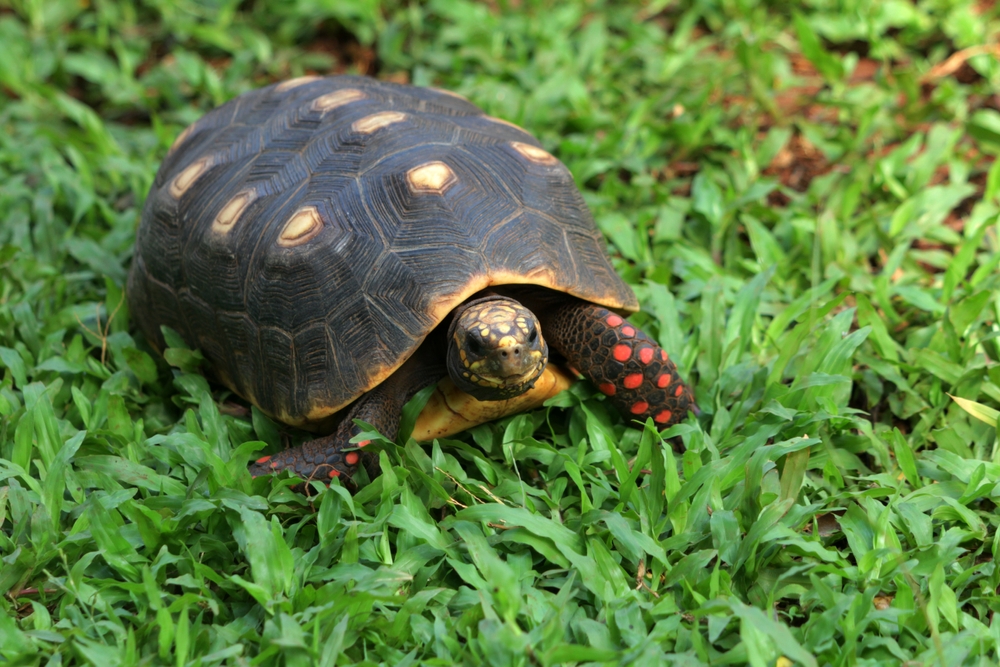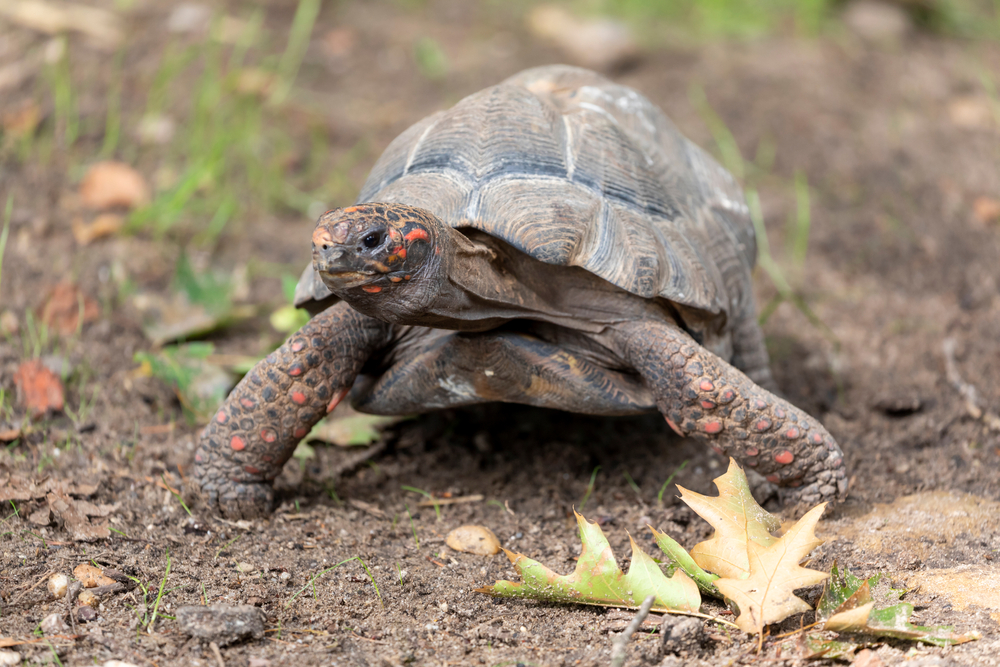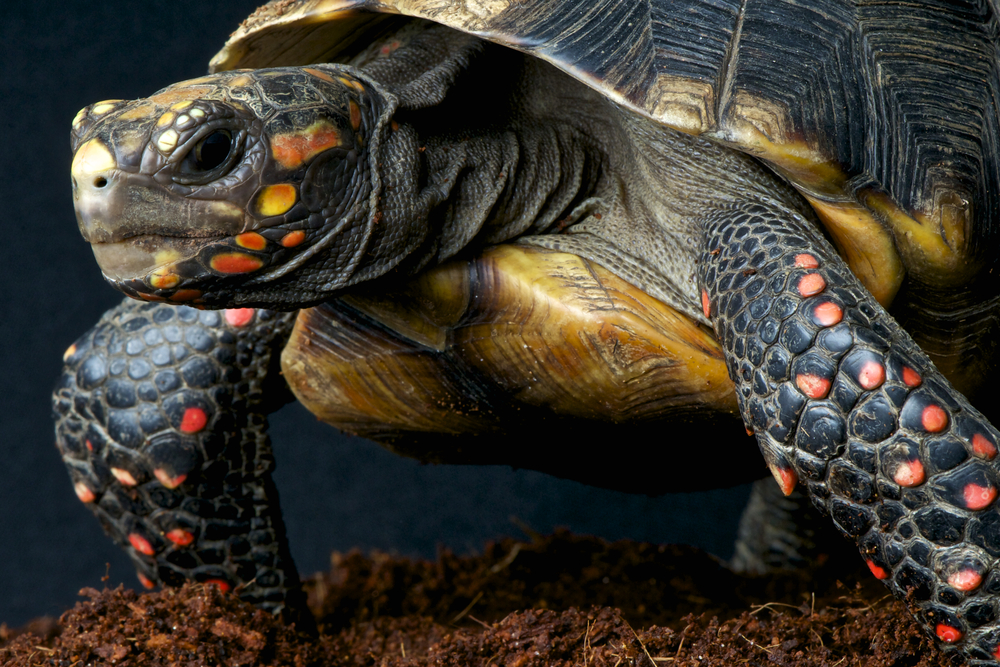The red-footed tortoise (Chelonoidis carbonaria) is a species of tortoise from northern South America. Their distribution stretches across the majority of Brazil, up to Guyana and as far South as Argentina. As such, they thrive in a variety of habitats from rainforests to savannah grasslands. This species is also thought to be absent from much of the Amazon basin as they actively avoid muddy areas due to their tendency to dig and burrow.

Red Footed Tortoise Husbandry
Although this higher humidity environment might be more specialist than some of the Mediterranean tortoises, their foraging habits make them much more forgiving in their dietary requirements. These tortoises will feed on fallen fruits through the wet season, which would usually be considered too rich and fatty for their European counterparts. The geological structure of South America does not provide the limestone base found in arid Europe and thus the shoots are not as rich in calcium. Therefore, a light dusting of calcium powder on a richer 60% fruit, 40% foliage diet is required to keep red foots healthy. Their frugivorous nature also makes them important seed-dispersers across their range. Red-footed tortoises have also been known to eat a good amount of carrion, giving them extra protein and calcium requirements when needed.
In captivity, red footed tortoises should be kept at 60-80% humidity, meaning wooden vivariums are often the optimal choice of enclosure, but tortoise tables with suitable moisture-retaining substrate are also an option. Ensuring that the enclosure replicates the heavily forested areas these tortoises come from is key. Creating a large indoor/outdoor enclosure with high levels of UV and no vegetation or cover is a common mistake as red foots prefer a very different environment to Mediterranean tortoises. Providing zone 2 lighting is most appropriate for red-footed tortoises. During the summer months, an outdoor enclosure with dappled shade is ideal for these tortoises and allows them to receive good levels on enrichment.
Red foots should be fed on a split of fruits and greens. Fresh tropical fruits such as papaya, cantaloups and mangos are great, but they will eat most fruits. Avoid banana or citrus and like other species, always avoid watery greens like iceberg lettuce or cucumber due to its poor nutritional content. Animal-based protein should also be supplied once a week. Different keepers will provide this in different ways, but shrimp, steamed chicken, boiled eggs and waxworms can be used.

